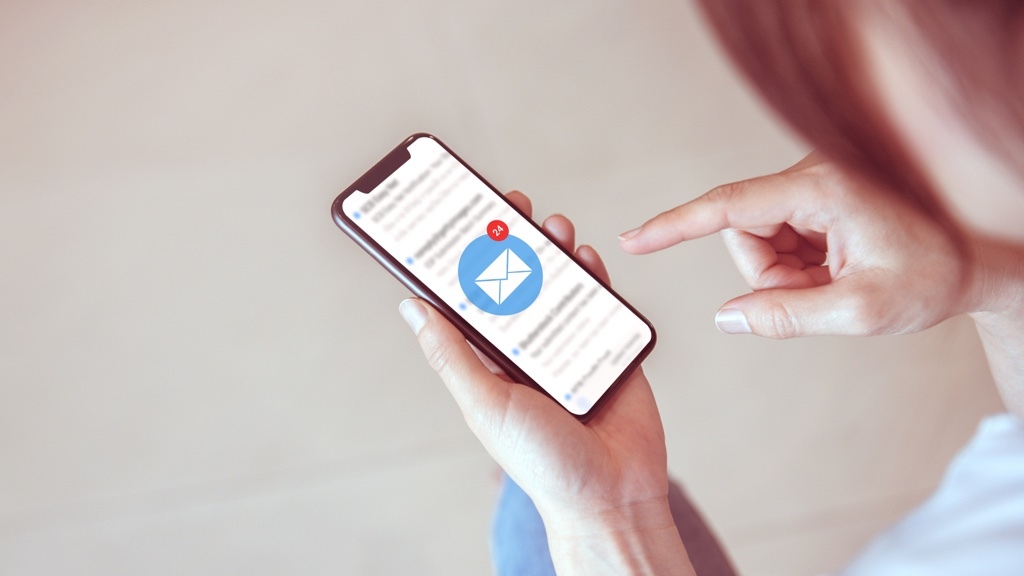Why you should create tasks out of emails and messages you want to mark as unread
Datum: 2025-10-09 09:55

I have often used the verb “process” to describe how I (and I am sure you as well) deal with what comes in via emails and other messaging channels systematically.
I go through a short flow of activities for every email I receive in addition to just reading and possibly responding to it before I move on to the next one. I do this to avoid digital piles of unmanaged emails and messages waiting for me to deal with them.
For you who prefer listening to reading, this post is also available as an episode of the ""Done!"" podcast:
A flow for every email
The process involves me reading it and then either doing what the message implies straight away (replying, for example) or creating a to-do task about what I need to do some other time and finally filing it away or deleting it. (Archiving and deleting mainly concerns emails and not so much chat messages.)
Unread but actually read becomes a to-do task
A key step in the process is that I create a to-do task if the incoming message means I have to do something that I do not want to do or have time to do immediately.
Some people I meet are reluctant to do this. Why spend time creating to-do tasks when it is so easy to mark the email you just read as unread again so that you can come back to it later?
Here’s why
Well, of course, you want to prioritize accurately and get the right things done at the right time. At every moment you want to choose the right task to work on. With this approach, you want to be able to see everything you have to do in one place, in one list, rather than looking through several places and channels to compare the priority of the tasks with each other. That is why you have a to-do list where everything you do not do immediately is gathered — no matter how the tasks come to you; as ideas, from colleagues, from a phone call, from a meeting, from a conversation, or some other way.
If you mark emails and messages as unread for you to return to, you create an additional implicit list (comprised of the unread messages). Since it is in the email- and message streams that “things happen” as new things come in, that will be the place you consult for what to do more than the actual to-do list (which remains unchanged when you do not do something with it yourself). The risk is therefore high that you will “forget about” or at least neglect the to-do list and instead primarily select tasks from the emails and messages.
But, just because something comes in as an email or message, it does not mean it should be prioritized. There may be something on the to-do list that has even higher priority right now, even if it was added several weeks ago. You prioritize wrongly, the tasks on the to-do list get delayed, the list itself becomes a guilty-conscience list, you feel that you no longer have a comprehensive overview of everything, and life just feels messier.
It should not have to be this way.
Do this
If the situation (and consequences) of not creating tasks from emails and messages that you are supposed to do something with but not right away, sound familiar, do the following:
- Look through your emails and the message feeds you are currently most frequently active in. It could be Teams, a comment feature in the collaboration tool you use, social media, or some other kind of chat platform. Do you have any emails or messages there that you have read and marked as unread for you to come back to?
- If so, create concrete and detailed to-do tasks from them instead.
- Make a habit of doing this in the future.
A complete list is more convenient
If you create to-dos from emails and messages that you would otherwise mark as unread again, you will have a to-do list that is more complete than otherwise. When you prioritize from it, you will prioritize more accurately, because you are prioritizing amongst everything you have to do — not just among what you have received through a particular channel. You will be able to “get through the inbox” faster since you can tuck away the emails you have received before you have done everything they entail.
You no longer have to keep track of both the email, the other inboxes, and the to-do list, but only the to-do list. If you look there, you can rest assured you are not missing anything someplace else.
What’s your solution?
How have you managed to keep your to-do list complete — despite new things coming in through many different channels? Please write to me and share!
(Speaking of how the inbox can sometimes feel overflowing. Read more about out how you can get rid of emails and messages you do not want to spend time on!)
You can get even more tips!

If you want more tips on how to create good structure at work, there are many ways to get that from me - in podcasts, videos, books, talks and other formats.




